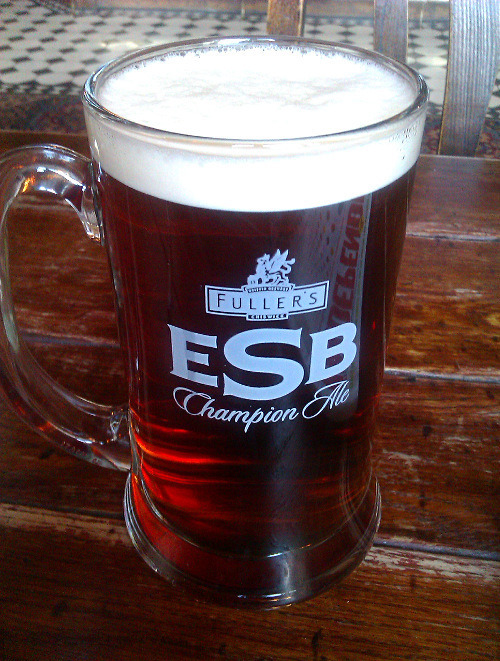Just when you think it’s going to start getting difficult to find all these beers, you make a discovery like Utobeer. Little more than a big cage in an unpleasantly busy market in London, Utobeer claim stocks of around 2,000 distinct beers, of which, given space constraints, around 700 are on display at any one time. Needless to say, Utobeer will be a trusty ally on our beery quest.
Sam Smith’s are primarily known in Britain for their chain of countless improbably well-priced pubs, none of which happen to sell any beer you’ve ever heard of. That’s because they only sell Sam Smith’s beer, brewed up in Tadcaster, North Yorkshire. To my surprise, a lot of their beer is available in bottles, and four such beers are in The Book.
Conveniently enough, Utobeer stocks at least one of them: Samuel Smith’s Imperial Stout.

Imperial Stout is fast becoming my favourite style of beer. Essentially, the style is like stout but stronger. Way stronger in some cases: I glowed about the 10% ABV Brooklyn Black Chocolate Stout, while my current favourite is probably The Kernel’s Imperial Brown Stout, which is marginally weaker at 9.9%.
Those are both incredibly good beers, so old Sam Smith’s version, clocking in at a comparatively shandy-drinking 7% ABV has some tough competition on its hands.
It’s a handsome enough bottle, with a charmingly old timey label, apparently designed by Charles Finkel, founder of Merchant du Vin who import Sam Smith’s beers to the US. True to form, even Sam Smith’s bottles are of a generous size, coming in at 355ml like this one, or at 550ml.
On cracking open the bottle, there’s an immediate chocolate aroma, though strangely it doesn’t stick around for long. Pouring the Imperial Stout, it certainly looks the part: black as it comes, with a smallish tan head.
It tastes, unsurprisingly, like a strongish stout but there’s slightly too much sweetness to it, followed by a odd bitterness that seems out of place for some reason. It’s also a little thin-bodied and kind of sticky.
Sam Smith’s Imperial Stout is quite drinkable, but it doesn’t rock my world. There just isn’t that depth of chocolate and coffee and smoke that one expects from a really good stout. It’s not a bad beer, but it’s not the best Imperial Stout out there by a long shot.
I’m no expert on brewing, but my feeling is that this beer is just crying out for more of the sugar to be fermented off, which would in turn result in an ABV more fitting for its style, and would no doubt add some of that complexity that it lacks.
Facts and Figures
| Brewery: | Samuel Smith Old Brewery, Tadcaster, North Yorkshire, England |
| Style: | Porters and Stouts |
| ABV: | 7.0% |
| Found at: | Utobeer, Borough Market, London SE1 |
| Dispense: | 355ml Bottle |









